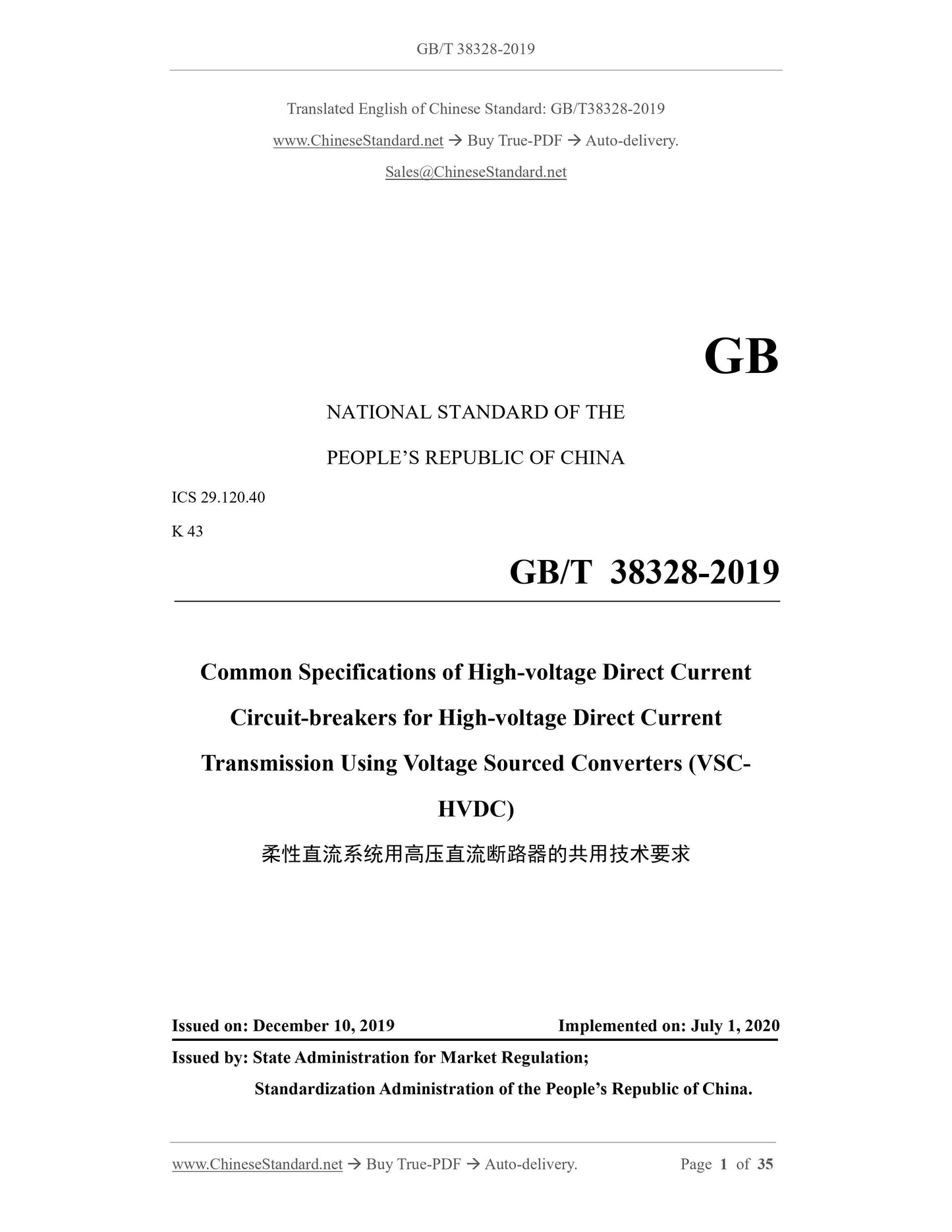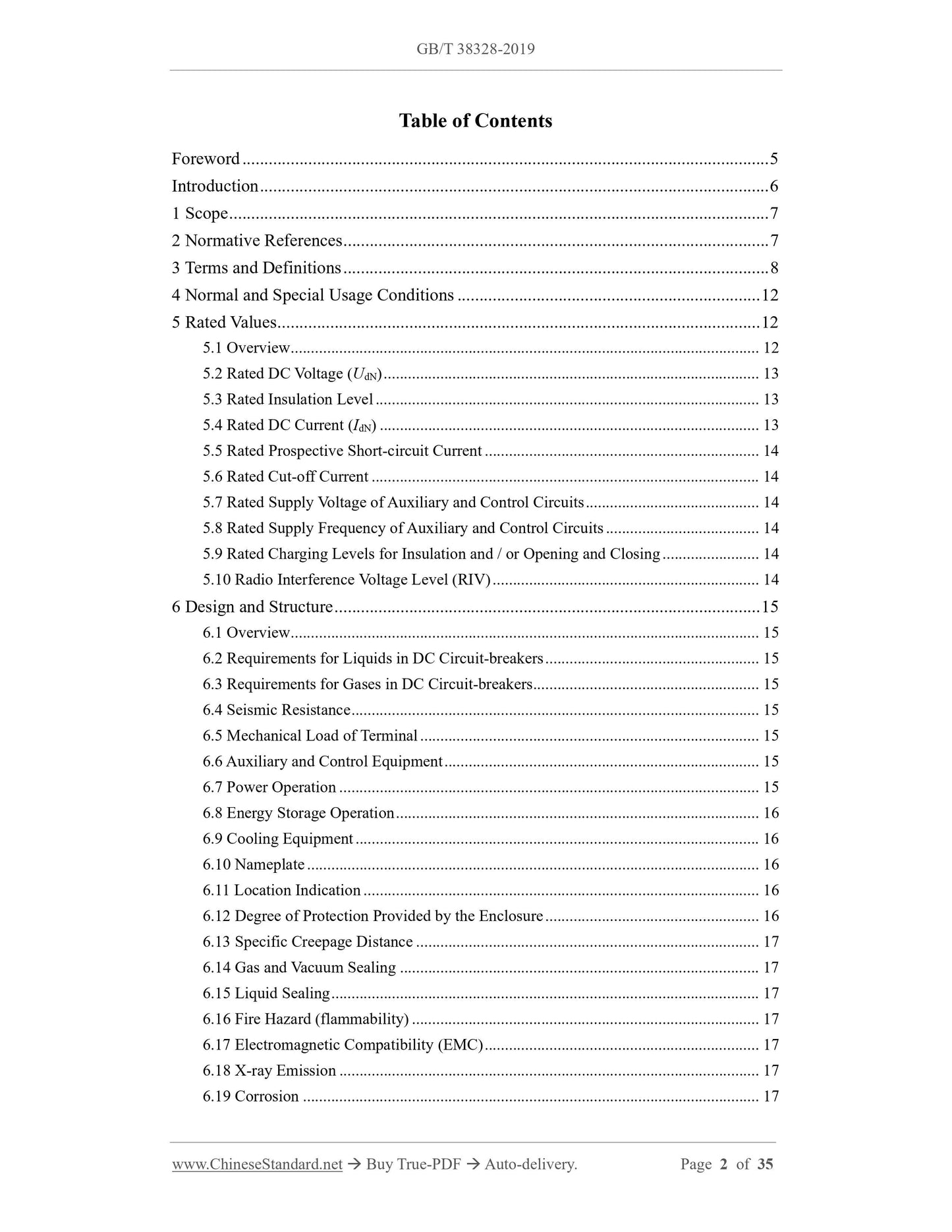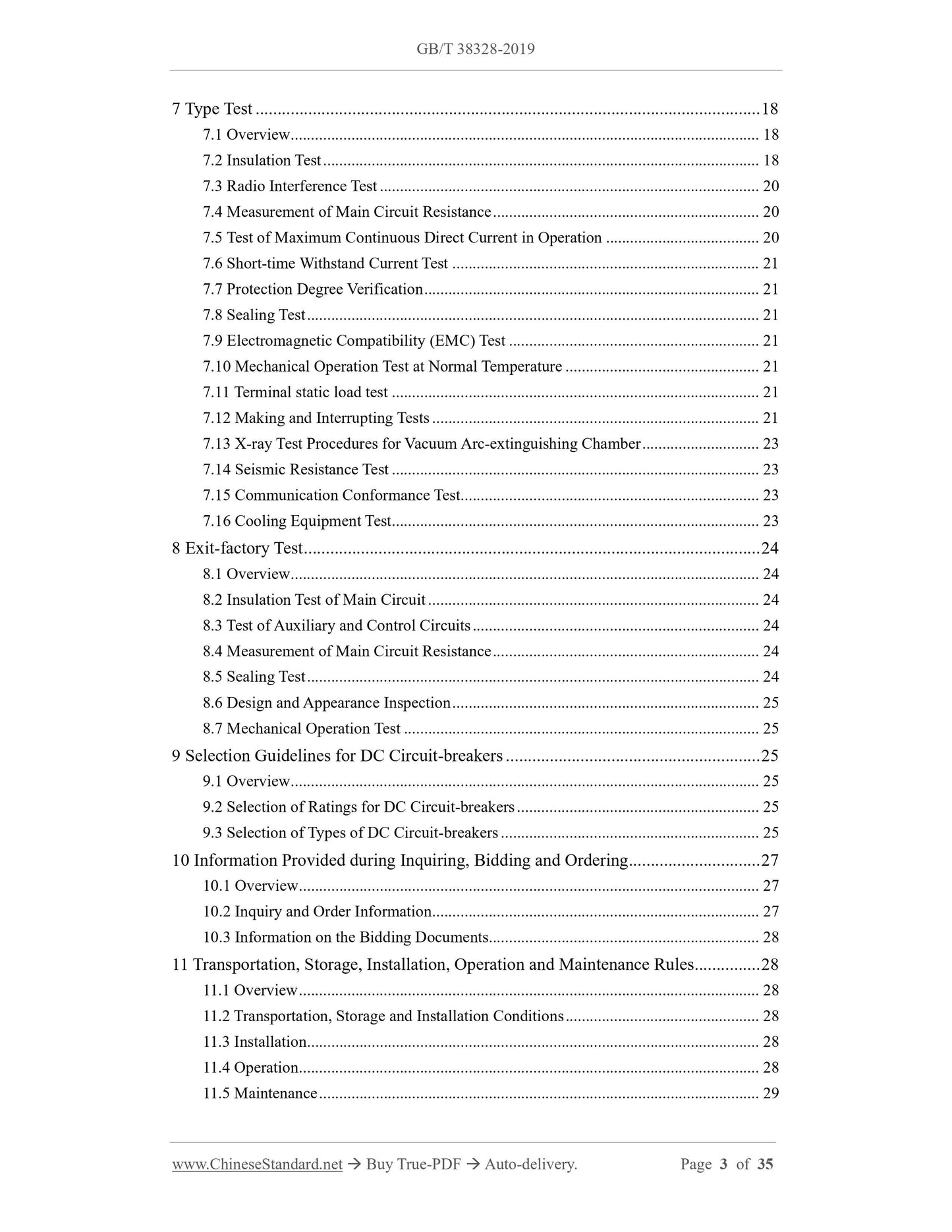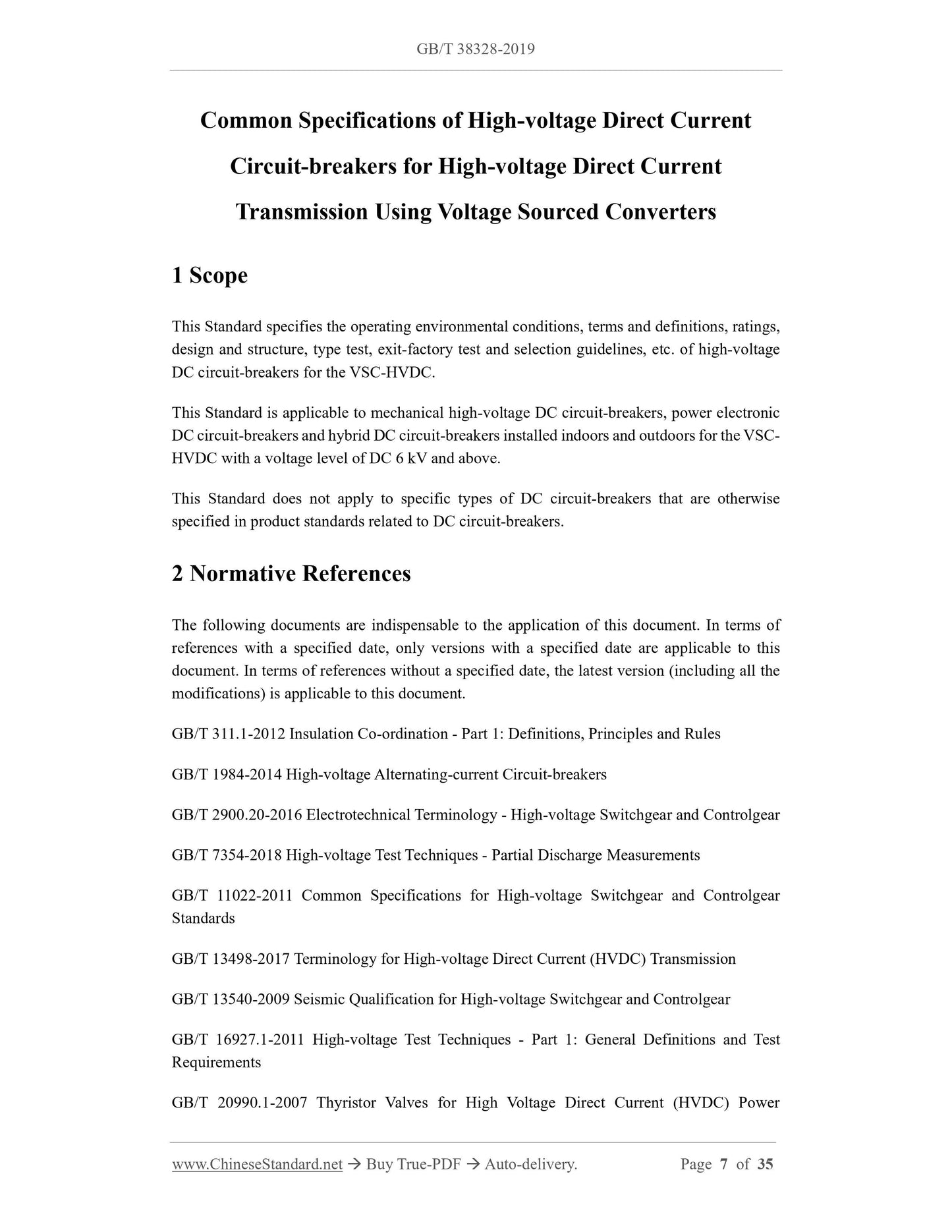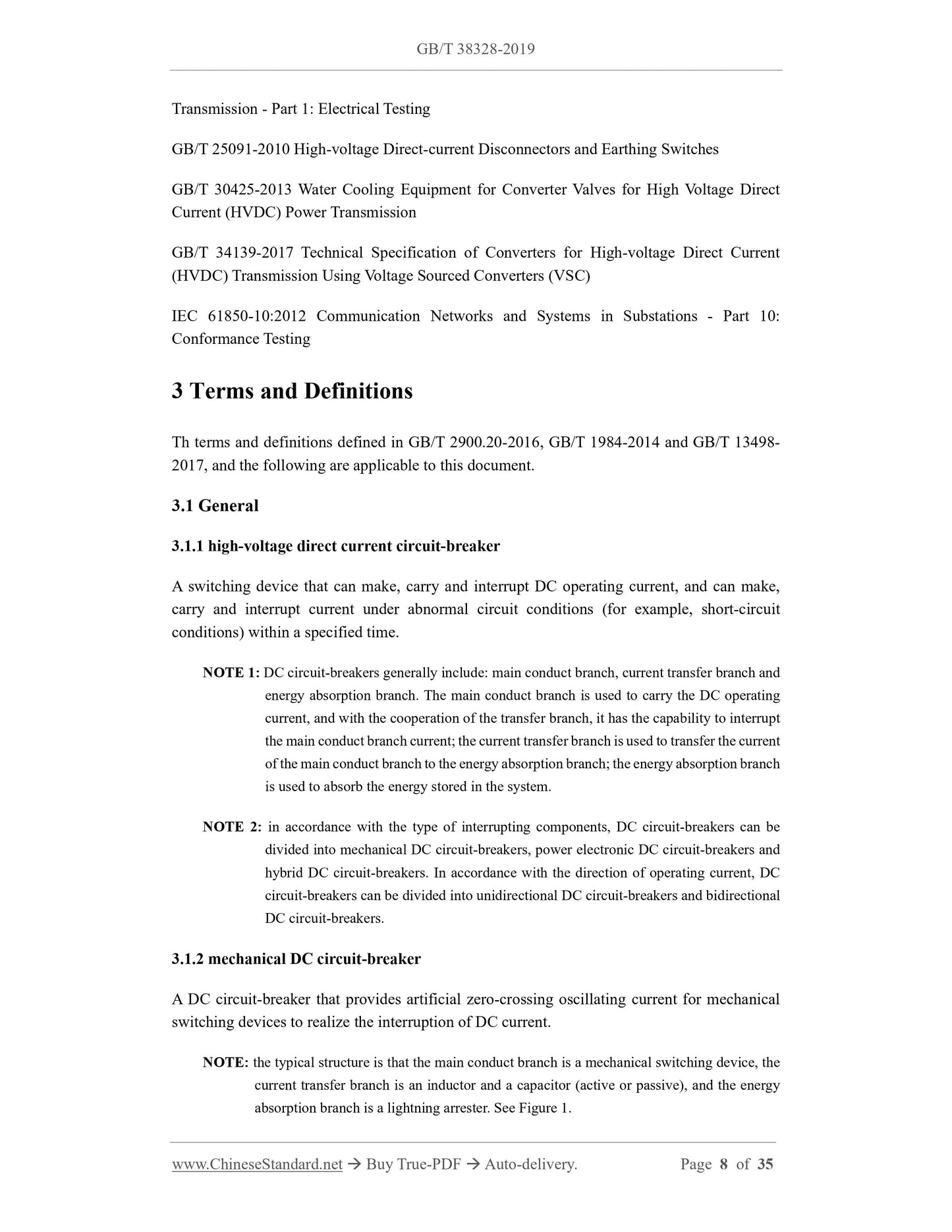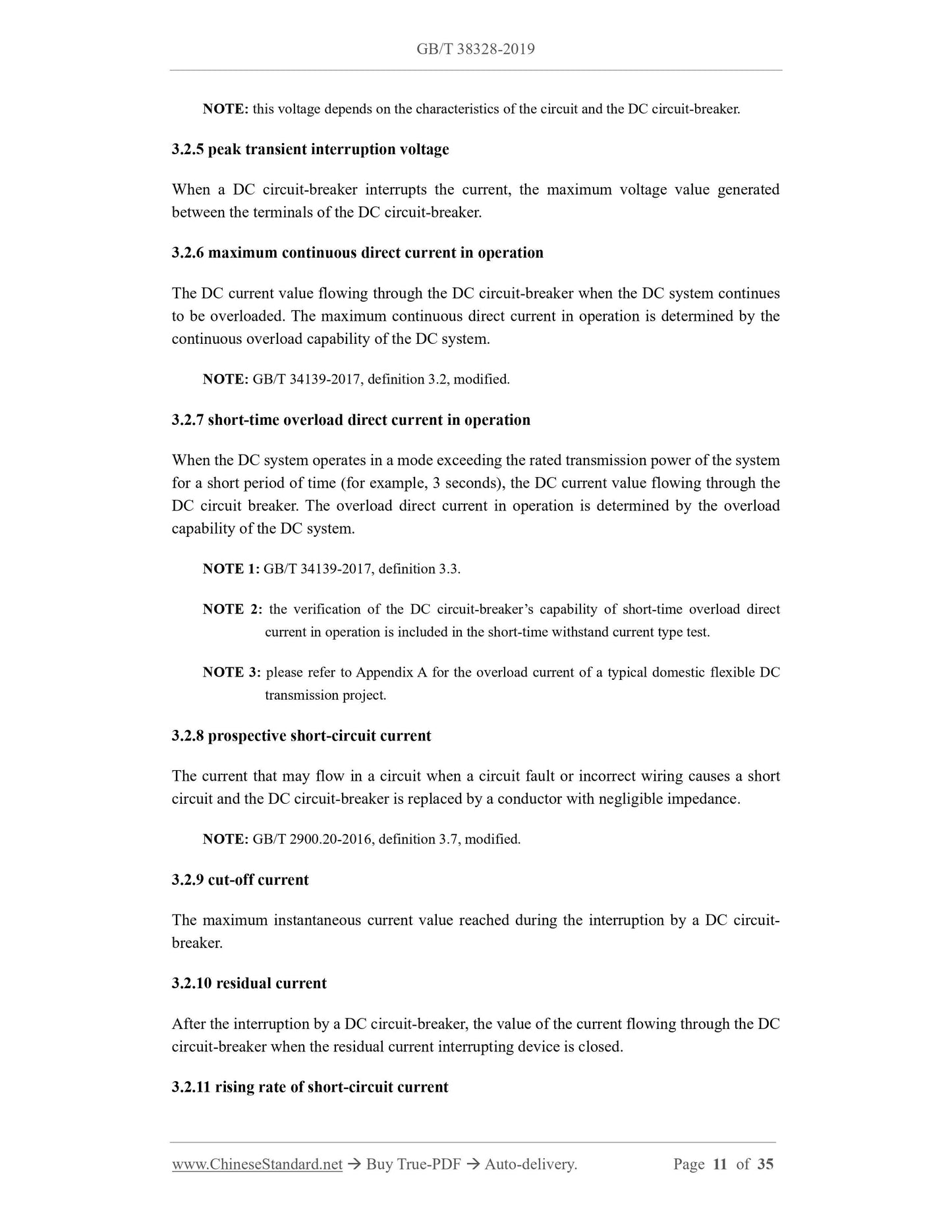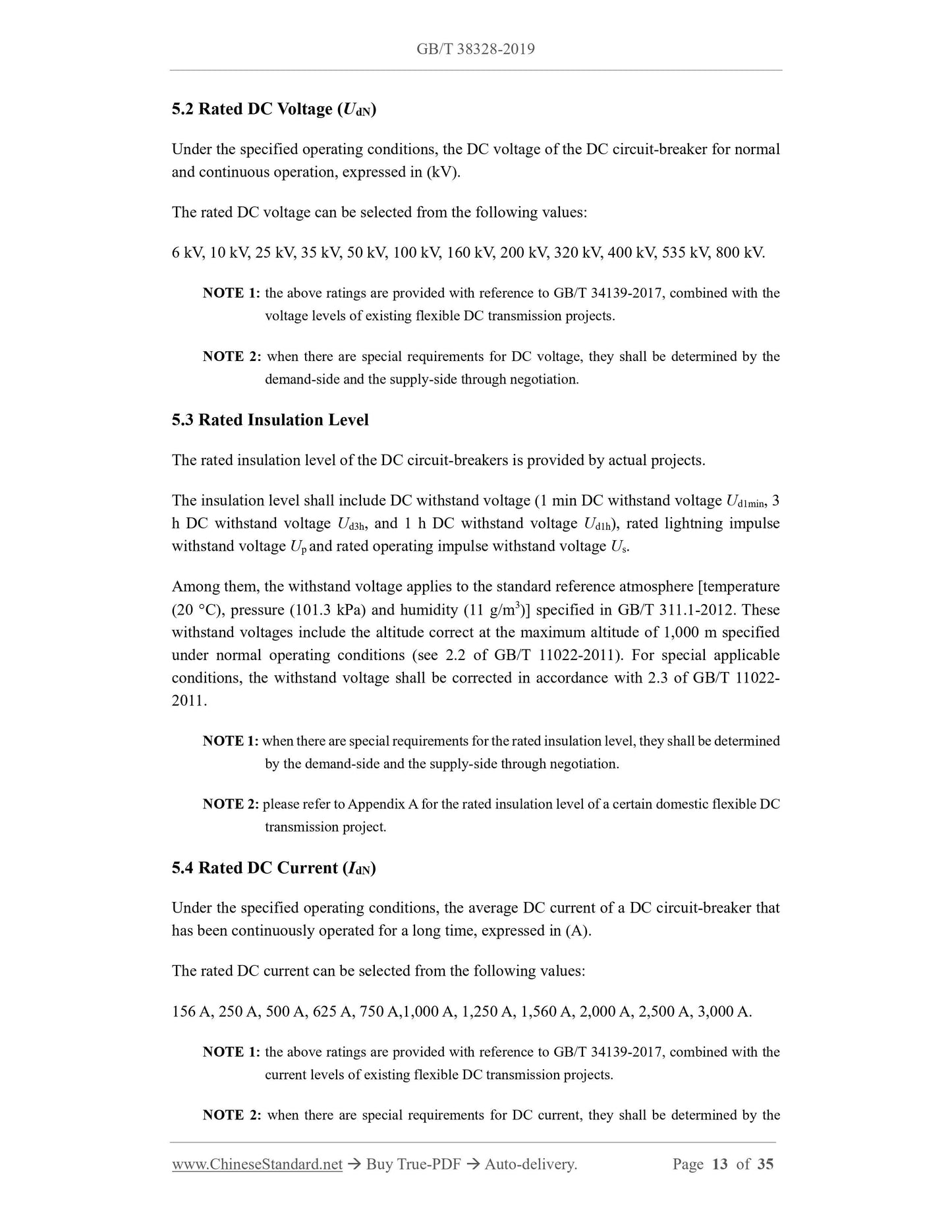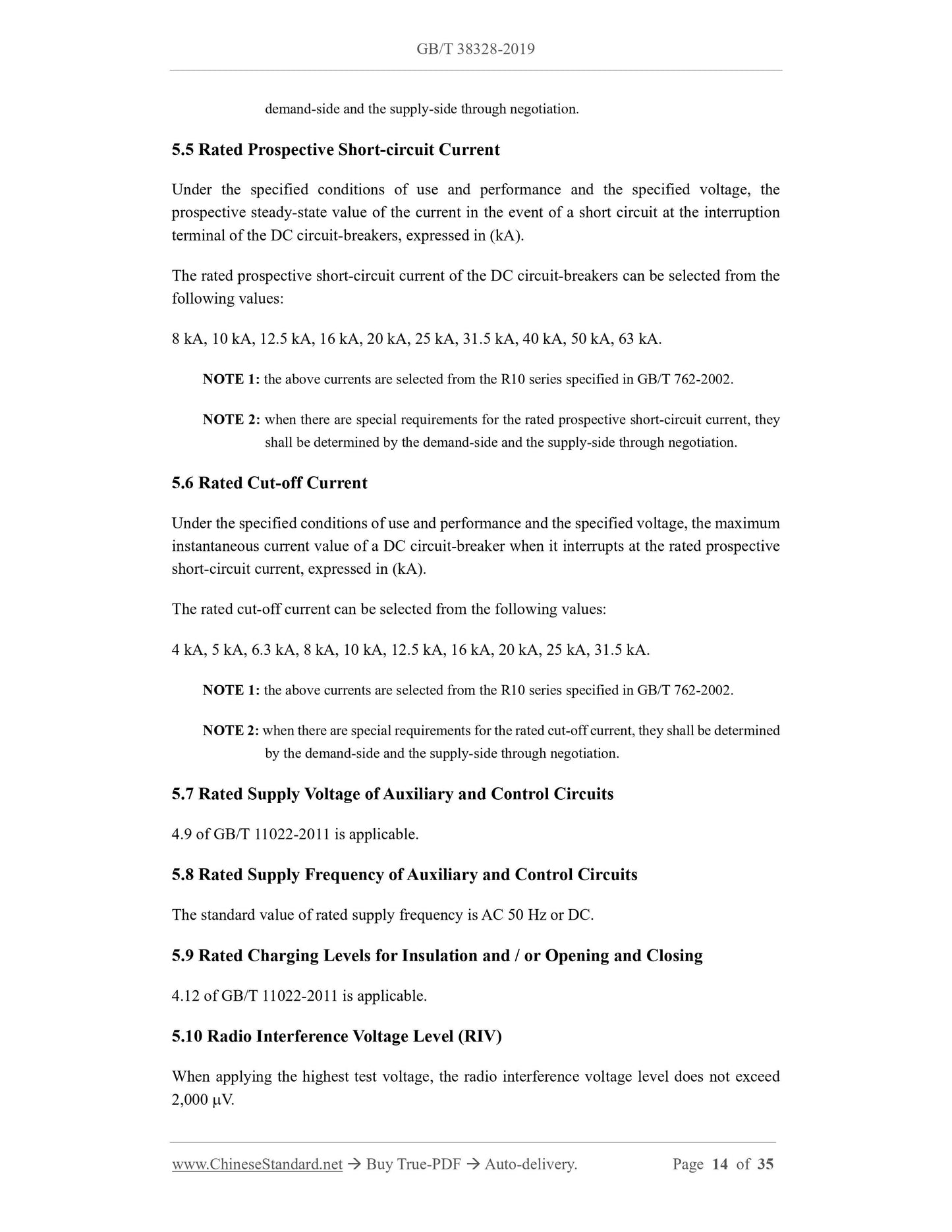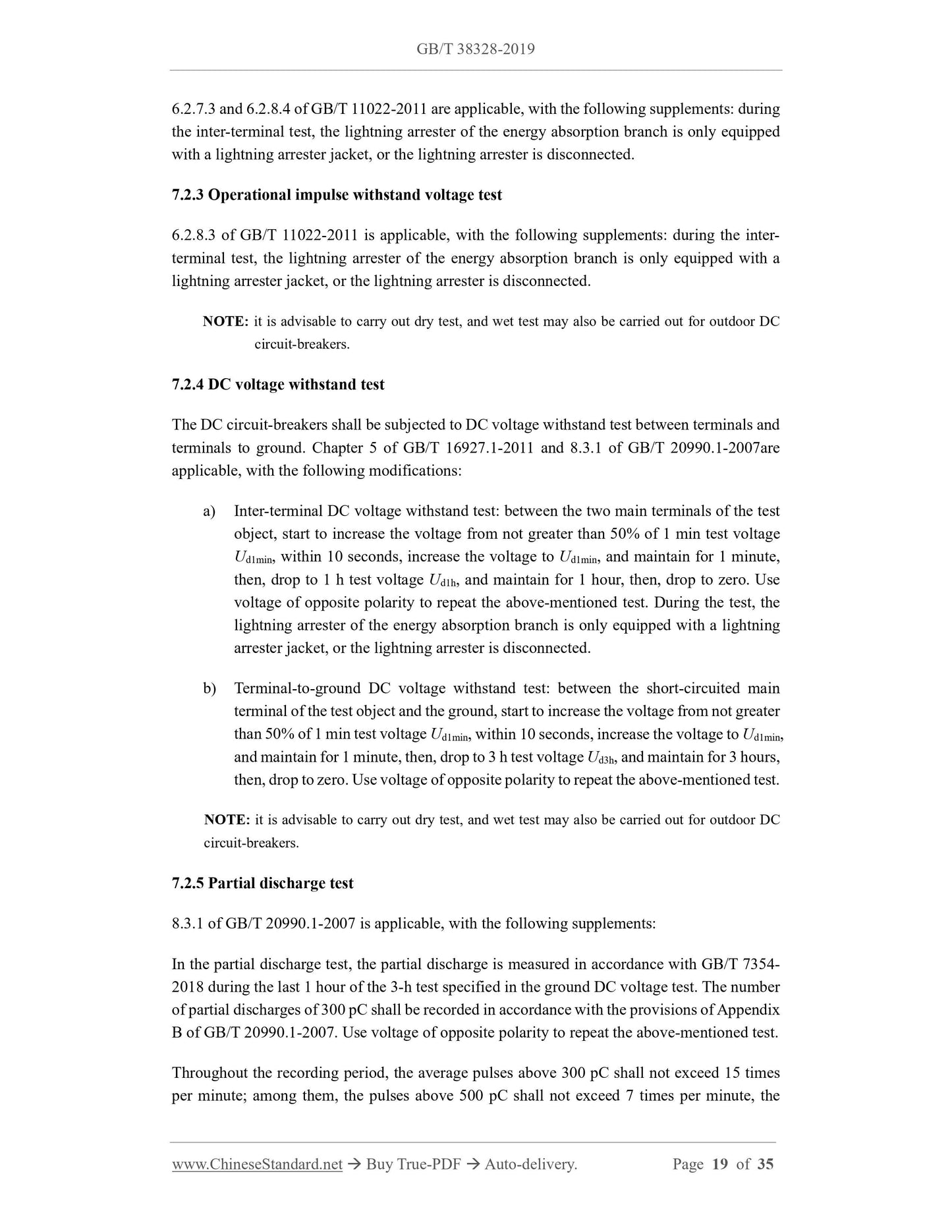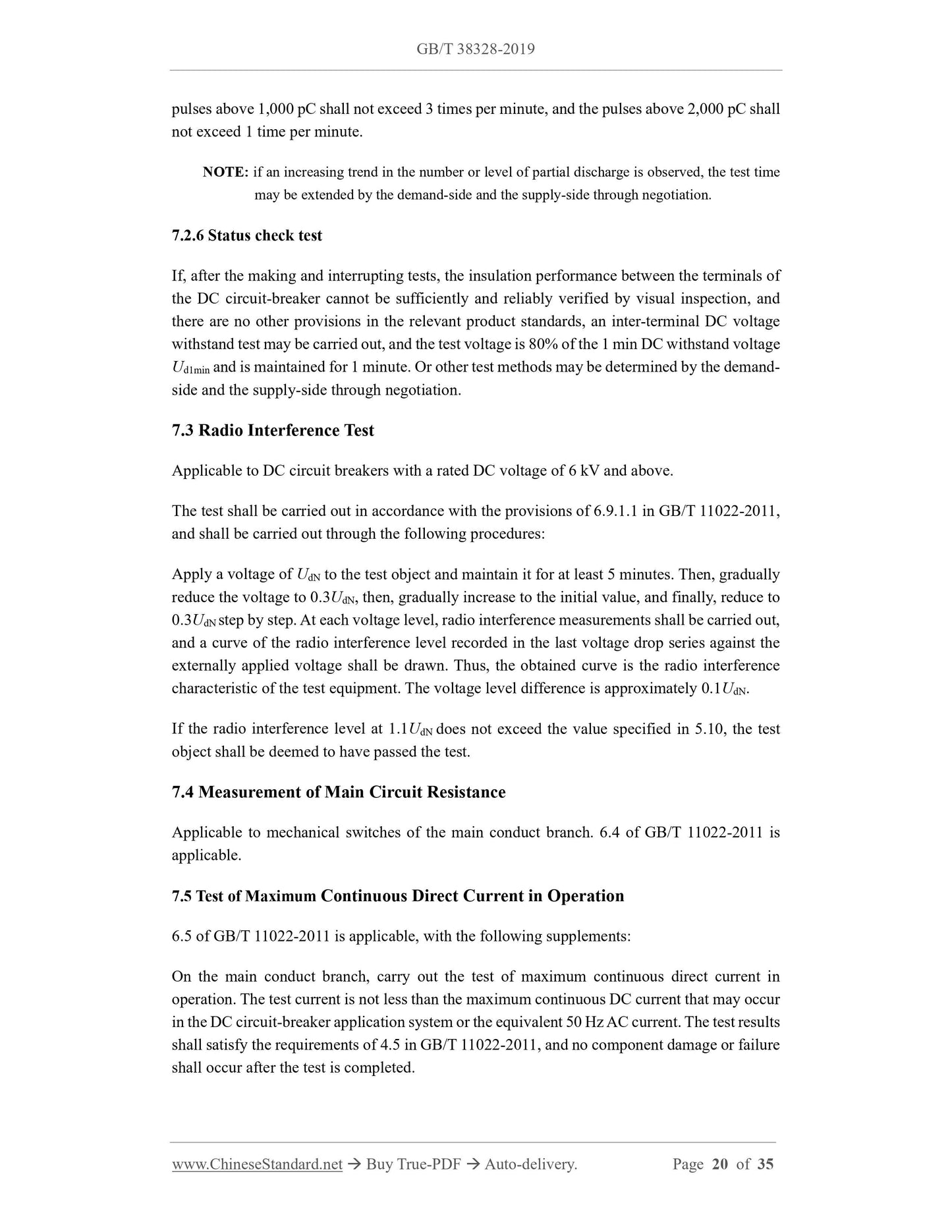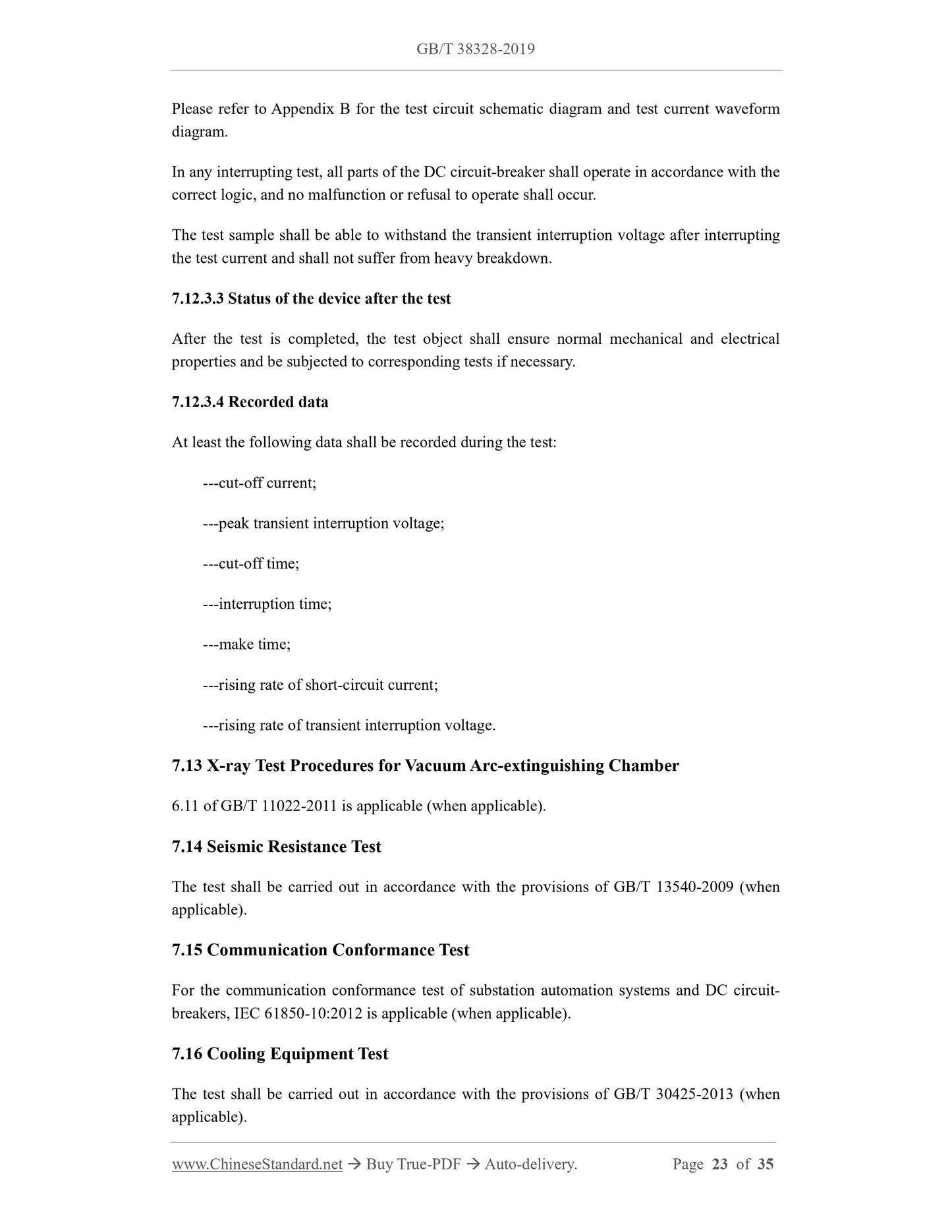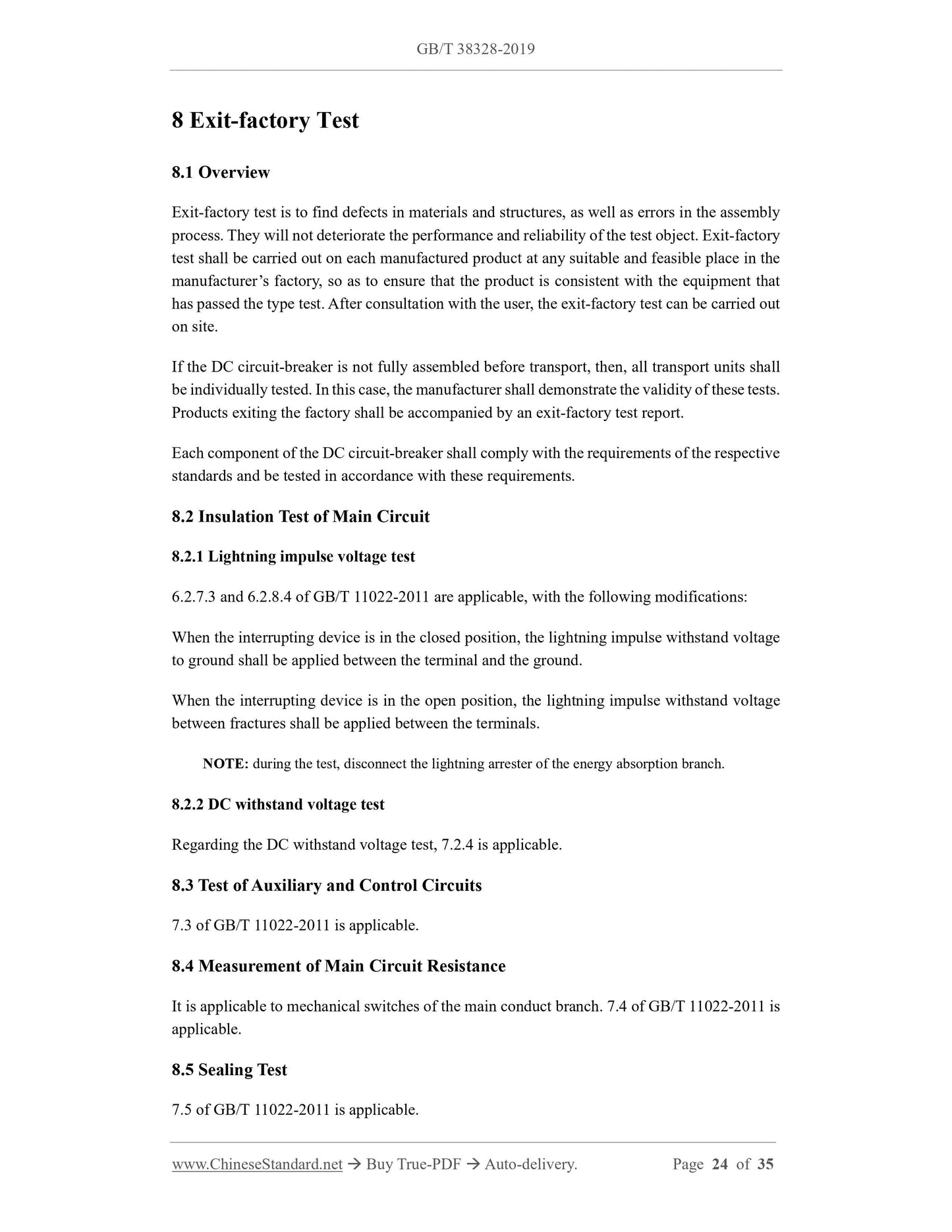1
/
of
12
www.ChineseStandard.us -- Field Test Asia Pte. Ltd.
GB/T 38328-2019 English PDF (GB/T38328-2019)
GB/T 38328-2019 English PDF (GB/T38328-2019)
Regular price
$450.00
Regular price
Sale price
$450.00
Unit price
/
per
Shipping calculated at checkout.
Couldn't load pickup availability
GB/T 38328-2019: Common specifications of high-voltage direct current circuit-breakers for high-voltage direct current transmission using voltage sourced converters (VSC-HVDC)
Delivery: 9 seconds. Download (and Email) true-PDF + Invoice.Get Quotation: Click GB/T 38328-2019 (Self-service in 1-minute)
Newer / historical versions: GB/T 38328-2019
Preview True-PDF
Scope
This Standard specifies the operating environmental conditions, terms and definitions, ratings,design and structure, type test, exit-factory test and selection guidelines, etc. of high-voltage
DC circuit-breakers for the VSC-HVDC.
This Standard is applicable to mechanical high-voltage DC circuit-breakers, power electronic
DC circuit-breakers and hybrid DC circuit-breakers installed indoors and outdoors for the VSC-
HVDC with a voltage level of DC 6 kV and above.
This Standard does not apply to specific types of DC circuit-breakers that are otherwise
specified in product standards related to DC circuit-breakers.
Basic Data
| Standard ID | GB/T 38328-2019 (GB/T38328-2019) |
| Description (Translated English) | Common specifications of high-voltage direct current circuit-breakers for high-voltage direct current transmission using voltage sourced converters (VSC-HVDC) |
| Sector / Industry | National Standard (Recommended) |
| Classification of Chinese Standard | K43 |
| Classification of International Standard | 29.120.40 |
| Word Count Estimation | 26,248 |
| Date of Issue | 2019-12-10 |
| Date of Implementation | 2020-07-01 |
| Issuing agency(ies) | State Administration for Market Regulation, China National Standardization Administration |
Share
